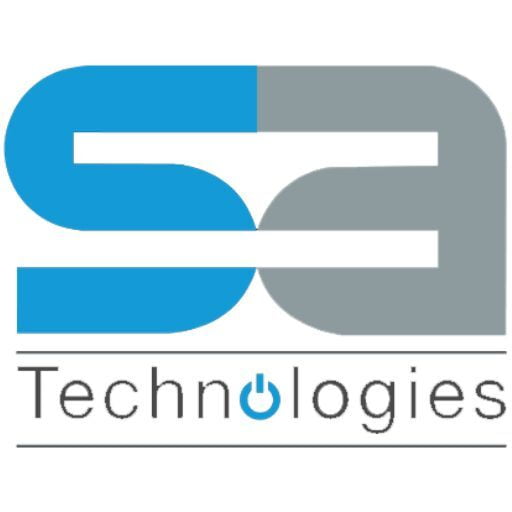In the evolving landscape of human resources, the role of HR professionals has expanded beyond traditional administrative functions. Today's HR teams are expected to be strategic partners, driving initiatives that enhance employee engagement, wellbeing, and organizational growth. However, the burden of manual, repetitive tasks often hampers their capacity to innovate and focus on higher-value activities. The Microsoft Power Platform offers a suite of tools Power Apps, Power Automate, Power BI, and Power Virtual Agents—that can transform HR operations. This blog post explores two significant HR organizational problems and how Power Platform provides effective solutions.
HR Organizational Problem 1: Time-Consuming Manual Administrative Tasks
Problem:
HR teams are frequently overwhelmed by manual, administrative tasks such as processing leave requests, which diverts their attention from more strategic initiatives like employee wellbeing and organizational development. These repetitive tasks not only consume valuable time but also increase the likelihood of errors and delays in administrative processes.
Solution:
The Microsoft Power Platform can automate these repetitive tasks, freeing up HR time and resources to focus on more value-added activities. By leveraging Power Apps and Power Automate, HR departments can streamline administrative workflows and ensure efficient task management.
Implementation:
1. Automating Leave Requests:
- Tool Used: Power Apps, Power Automate
- Description: Employees can use Power Apps to submit leave requests, which are then processed and tracked automatically through Power Automate.
- Benefit: This streamlines the leave management process, reduces manual errors, and ensures timely approvals.
- Process:
- Employees submit leave requests through a user-friendly interface in Power Apps.
- The leave request is automatically routed to the manager for approval via Power Automate.
- Once approved, the system updates the leave records and sends notifications to both the employee and HR.
- This automation ensures that leave requests are handled promptly and accurately, without manual intervention.
- Employees submit leave requests through a user-friendly interface in Power Apps.
2. Benchmarking and Management Reporting:
- Tool Used: Power BI
- Description: Power BI can be used to analyze trends from leave data and other HR metrics, providing managers with a single source of truth for reporting and decision-making.
- Benefit: This enables better planning, resource allocation, and strategic initiatives based on data-driven insights.
- Process:
- Data from leave requests and other HR activities are collected and visualized in Power BI dashboards.
- Managers can access real-time insights and historical trends, enabling informed decision-making.
- Regularly updated dashboards provide a comprehensive view of HR metrics, facilitating strategic planning and resource management.
HR Organizational Problem 2: Innovation Stifled by Administrative Burden
Problem:
HR departments often find their capacity for innovation and strategic thinking hampered by the burden of administrative tasks. The constant pressure to manage routine processes leaves little time for initiatives that enhance employee engagement and organizational growth.
Solution:
By automating these tasks using the Microsoft Power Platform, HR can redirect their efforts towards fostering innovation and applying the human touch where it’s needed most. This allows HR professionals to focus on strategic initiatives that drive employee engagement and organizational success.
Implementation:
1. Automating Routine HR Processes:
- Tool Used: Power Apps, Power Automate
- Description: Routine tasks such as updating employee records, managing benefits, and handling routine queries can be automated.
- Benefit: This reduces the time HR spends on administrative tasks, allowing them to focus on strategic initiatives.
- Process:
- Automate the collection and processing of employee data through Power Apps.
- Set workflows in Power Automate to manage updates, notifications, and approvals for routine HR processes.
- This automation ensures that routine tasks are handled efficiently, reducing the administrative burden on HR staff.
2. Driving Employee Engagement and Wellbeing:
- Tool Used: Power BI, Power Virtual Agents
- Description: Use Power BI to monitor and analyze employee engagement metrics, and deploy Power Virtual Agents to provide ongoing support and engagement opportunities.
- Benefit: This ensures that HR can proactively address employee concerns and foster a supportive workplace culture.
- Process:
- Regularly update Power BI dashboards with engagement survey results and use insights to tailor HR strategies.
- Deploy Power Virtual Agents to offer continuous support and engagement activities, such as answering common employee queries and providing resources for wellbeing.
- Virtual agents can also facilitate regular check-ins with employees, offering a proactive approach to employee engagement and support.
Conclusion
The Microsoft Power Platform offers transformative solutions for HR departments, enabling them to automate manual tasks and focus on strategic initiatives. By leveraging tools like Power Apps, Power Automate, Power BI, and Power Virtual Agents, HR teams can streamline administrative workflows, improve efficiency, and drive innovation. This shift not only enhances operational efficiency but also fosters a supportive and engaging workplace culture.
As HR professionals continue to navigate the complexities of the modern workplace, the Power Platform provides the flexibility and functionality needed to maintain a thriving, engaged, and productive workforce. Embrace the power of automation with the Microsoft Power Platform and transform your HR operations today.
